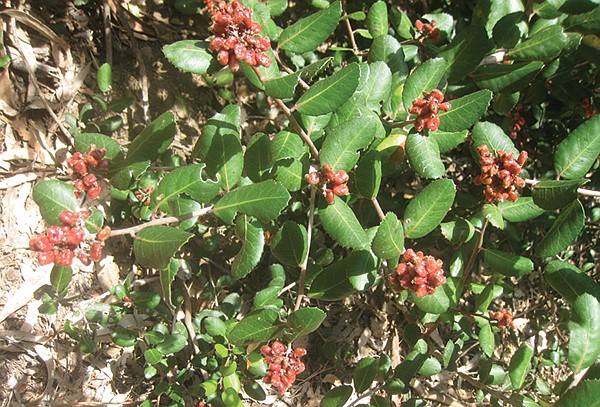 Facebook
Facebook
 X
X
 Instagram
Instagram
 TikTok
TikTok
 Youtube
Youtube

Pottery Canyon is a historical site that was named after the La Jolla Clay Products Company. This small company developed because a potter from Mexico found raw clay in the area and took up residence here. Using a wood-fired kiln, they made handmade roof tiles and adobe brick. Their wares were used to restore Mission San Diego de Alcalá as well as for construction in many buildings in the La Jolla community.

There are two short hike options at Pottery Canyon. There is a level trail underneath eucalyptus trees and a steep side canyon to an overlook with an ocean view. The shorter trail is really just a short stroll.
Proceed straight ahead and to the left side of the parking-lot entrance to access either of the two trails. Continue straight ahead under the tall eucalyptus trees for a short distance. Some low-hanging branches and fallen logs mark the recommended turnaround point. The short distance of this trail is more conducive to a relaxed amble. The primary native plant is lemonade berry, which produces a sticky berry with a tart citrus flavor. The pioneers would flavor their drinking water with the berry of this plant. This might be a place to enjoy after a rain, as there is a small intermittent riparian area adjacent to the trail. This is the perfect trail to introduce hiking to small children.
The second trail branches off of the main trail after a short distance. Look for some fallen logs and a concrete post on the right. Maneuver over and under the logs to begin on this trail, which becomes very steep in a short distance. The loose soil also adds to the challenge of this hike. The only advantage is the narrow trail, which may supply some help in using plants to hold onto during your ascent and descent.
The trail offers an opportunity to view native vegetation, such as chemise and buckwheat. These plants were used by Native Americans. The new growth of the chemise grows straight in order to provide less surface area to the sun and help conserve water. Due to its straightness, it was used to make the fore shaft of arrows for hunting. The seeds of the buckwheat were ground and used in times of famine as a filler food. There is an interesting open area on the right side of the trail with a beautiful geological feature. This area has sculpted iron-rich soil due to erosion. There is also a section of the trail that contains cobbles, rounded rocks. These cobbles are representative of other areas of the county. They once were a part of Mexico but were transported via a shift in the tectonic plates many millions of years ago. There is a view at the summit, where you can see La Jolla and the ocean from a distance.



Pottery Canyon is a historical site that was named after the La Jolla Clay Products Company. This small company developed because a potter from Mexico found raw clay in the area and took up residence here. Using a wood-fired kiln, they made handmade roof tiles and adobe brick. Their wares were used to restore Mission San Diego de Alcalá as well as for construction in many buildings in the La Jolla community.

There are two short hike options at Pottery Canyon. There is a level trail underneath eucalyptus trees and a steep side canyon to an overlook with an ocean view. The shorter trail is really just a short stroll.
Proceed straight ahead and to the left side of the parking-lot entrance to access either of the two trails. Continue straight ahead under the tall eucalyptus trees for a short distance. Some low-hanging branches and fallen logs mark the recommended turnaround point. The short distance of this trail is more conducive to a relaxed amble. The primary native plant is lemonade berry, which produces a sticky berry with a tart citrus flavor. The pioneers would flavor their drinking water with the berry of this plant. This might be a place to enjoy after a rain, as there is a small intermittent riparian area adjacent to the trail. This is the perfect trail to introduce hiking to small children.
The second trail branches off of the main trail after a short distance. Look for some fallen logs and a concrete post on the right. Maneuver over and under the logs to begin on this trail, which becomes very steep in a short distance. The loose soil also adds to the challenge of this hike. The only advantage is the narrow trail, which may supply some help in using plants to hold onto during your ascent and descent.
The trail offers an opportunity to view native vegetation, such as chemise and buckwheat. These plants were used by Native Americans. The new growth of the chemise grows straight in order to provide less surface area to the sun and help conserve water. Due to its straightness, it was used to make the fore shaft of arrows for hunting. The seeds of the buckwheat were ground and used in times of famine as a filler food. There is an interesting open area on the right side of the trail with a beautiful geological feature. This area has sculpted iron-rich soil due to erosion. There is also a section of the trail that contains cobbles, rounded rocks. These cobbles are representative of other areas of the county. They once were a part of Mexico but were transported via a shift in the tectonic plates many millions of years ago. There is a view at the summit, where you can see La Jolla and the ocean from a distance.
